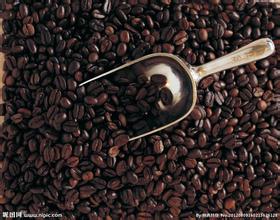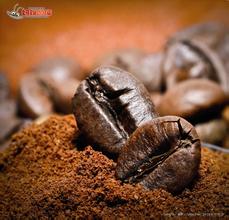Introduction of flavor and taste of coffee farm in Ecuador introduction of Hasunda Coffee Garden
Mr. Veniso, champion of the 014 Ecuadorian Coffee Competition, told reporters that some of the Ecuadorian coffee is espresso made from Ecuadorian alpine coffee beans. This coffee comes from a mountain area about 1000 to 2000 meters above sea level and has a mellow taste with aromas and sweetness of fruit, grass and chocolate. Some add mint grass from the Amazon to this espresso. Some add the Ecuadorian rose petals called "Rolls in the Rose" to the espresso. The coffee beans produced in Ecuador's Galapagos Islands are organic coffee beans. Thanks to the unique ecological environment such as volcanic soil and microclimate, coupled with its lack of chemical fertilizers and pesticides, it is recognized as a natural green boutique coffee. This naturally grown coffee tastes mild, with a hint of flowers and fruit and caramel. It is understood that the Galapagos Islands are about 1000 kilometers away from the mainland of Ecuador and are located at the confluence of the eastern Pacific Ocean and the three major ocean currents. In 1978, the Galapagos Islands was declared a "World Natural Heritage site" by UNESCO. The archipelago is known as the "living Museum of Biological Evolution" and "the melting pot of marine life", and Darwin's theory of evolution was inspired by the Galapagos Islands.
The addition of Gaoshandou to the rose is so amazing.
Mr. Veniso, champion of the 2014 Ecuadorian Coffee Competition, told reporters that some of the Ecuadorian coffee is espresso made from Ecuadorian alpine coffee beans. This coffee comes from a mountain area about 1000 to 2000 meters above sea level and has a mellow taste with aromas and sweetness of fruit, grass and chocolate. Some add mint grass from the Amazon to this espresso. Some add Ecuadorian rose petals called "Rolls-Royce in roses" to espresso, which tastes amazing.

Important Notice :
前街咖啡 FrontStreet Coffee has moved to new addredd:
FrontStreet Coffee Address: 315,Donghua East Road,GuangZhou
Tel:020 38364473
- Prev

Introduction to Santa Cruz Manor
I was startled by his appearance when I got the bean. The shape of the raw bean is very beautiful, the body is quite full, and the size and defect rate can be compared with the beans from Sigri Manor in Papua New Guinea and the Peak Farm in Australia. In 1869, Mr. Manuel Corpos, the first owner of the Galapagos Islands, hoped to find a fit.
- Next

Introduction to Esmedala Manor of Panamanian Coffee Manor
The species of Geisha was discovered in the Rose Summer Forest of Ethiopia in 1931 and sent to the Coffee Institute in Kenya; it was introduced to Uganda and Tanzania in 1936, in Costa Rica in 1953, and Panama was introduced in the 1970s by Francesca of Dongba Seven Farm Garden. Mr. Serraxin got seeds from CATIE, Costa Rica, and started growing Rosa Coffee.
Related
- Does Rose Summer choose Blue, Green or Red? Detailed explanation of Rose Summer Coffee plots and Classification in Panamanian Jade Manor
- What is the difference between the origin, producing area, processing plant, cooperative and manor of coffee beans?
- How fine does the espresso powder fit? how to grind the espresso?
- Sca coffee roasting degree color card coffee roasting degree 8 roasting color values what do you mean?
- The practice of lattes: how to make lattes at home
- Introduction to Indonesian Fine Coffee beans-- Java Coffee producing area of Indonesian Arabica Coffee
- How much will the flavor of light and medium roasted rose summer be expressed? What baking level is rose summer suitable for?
- Introduction to the characteristics of washing, sun-drying or wet-planing coffee commonly used in Mantenin, Indonesia
- Price characteristics of Arabica Coffee Bean Starbucks introduction to Manning Coffee Bean Taste producing area Variety Manor
- What is the authentic Yega flavor? What are the flavor characteristics of the really excellent Yejasuffi coffee beans?

